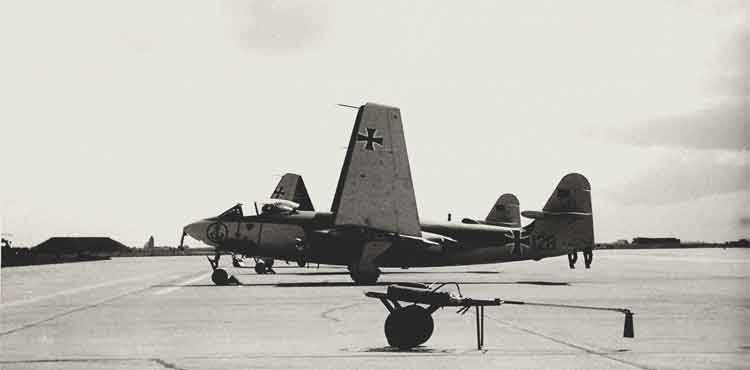
|
||
| Sea Hawk of No. 1 Fliegermarine German Navy at RAF Sylt July 1960. (Thanks to John Mackenzie) Hawker Sea Hawk Crew:1; Powerplant: one 2,449Kg (5,400lbs) thrust Rolls-Royce Nene 103 turbojet engine; Performance: Max speed 969kph (602mph); range: 1,287Km (800 miles); service ceiling: 13,565m (44,500ft); Dimensions: wingspan: 11.89m (39ft); length: 12.09m (39ft 8in); height: 2.64m (8ft 8in); Weight: 7,348Kg (16,200lbs); Armament: four 20mm Hispano cannon; provision for four 227Kg (500lb) bombs, or four 227Kg (500lb) bombs and 10 20cm(8in) or 16 12.7cm (5in) rocket RPs. The Hawker Sea Hawk started life as P.1040, a prototype single-seat, land-based interceptor. The first prototype Sea Hawk flew on 2 September 1947, and the aircraft entered production as the Sea Hawk Mk. 1. Later Sea Hawk variants, culminating in the FGA VI, possessed a strengthened wing to accommodate bombs, rockets or drop tanks. Sea Hawks were issued to Fleet Air Arm squadrons in 1953, and three years later the type was to see action with six squadrons during the Suez crisis, carrying out many ground attack operations. Sea Hawks also served with the Royal Netherlands Navy, the Federal German Naval Air Arm, and the Indian Navy. Specifications apply to the Sea Hawk FGA VI. (Thanks to "The Encyclopedia of Aircraft" by Robert Jackson). |
||